merantau
Senior Member
Motorcycling in Indonesia Part 2: Potholes and Pitfalls.
![DSCN2882[1].jpg DSCN2882[1].jpg](https://www.rideasia.net/motorcycle-forum/data/attachments/15/15980-ec68082aebf69152a2e2dfb2e27dca76.jpg) This is why I don't ride at night in unfamiliar areas. And I don't mean running over the drying peanuts!
This is why I don't ride at night in unfamiliar areas. And I don't mean running over the drying peanuts!
So, you’re in Indonesia on a riding holiday and you want to make it back in one piece - how do you go about it? Same as anywhere else of course – ride, defensively, expect the unexpected and ‘live in the now’. When you’re on the bike, cruising along, it’s not the time to be thinking about the stunning waitress who served dinner at the hotel last night. You can do that when you’re stopped at the traffic lights!
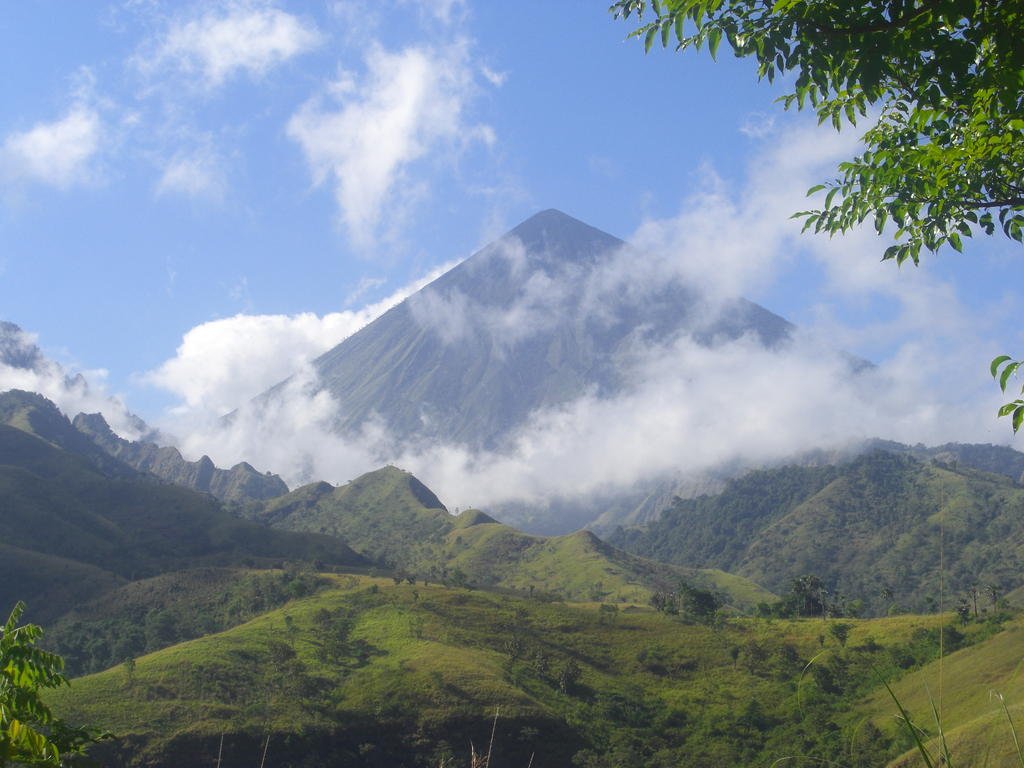
But there are a few idiosyncratic elements attached to driving/riding in Indonesia that you have to come to terms with. In general, road users in the city are more disciplined than those in the countryside. For example, out in the sticks, using indicators is optional, as is the necessity to wait for a break in the traffic before doing a U-turn. When entering a major road from a driveway or a minor road, you just drive out and expect the traffic to slow or go around you. Rear vision mirrors are strictly for wusses; bikes look much more stylish without them. Furthermore, in rural areas lights are not really necessary. A pillion passenger holding a torch, or flashing one occasionally if batteries are low, will suffice. Bikes carrying whole families and all sorts of loads are a common sight and you will see a lot of young school kids lairising and racing each other to and from school. A lot of bikes won’t be registered or maintained and a lot of riders won’t be licensed.
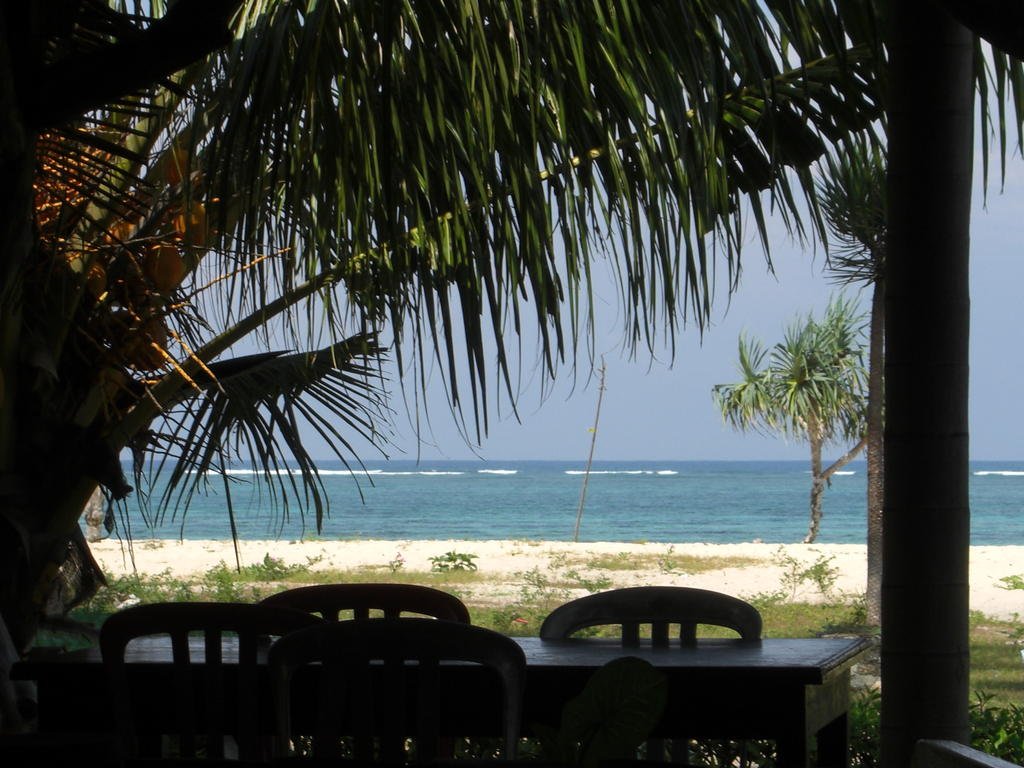
In the city, at busy intersections on multi lane roads, where traffic lights are on a long cycle, if the light has only been red for a few seconds the attitude for some seems to be: “Just plough on through – after all the intersection is wide and the other guys will stop rather than have an accident!” If you’re a pretty girl on a scooter it’s best to avoid eye contact with male road users as you never know what sleazeoids are out there. The best way to do this is to text on your mobile as you’re riding, looking up occasionally to make sure you haven’t missed your exit.
And if you’re driving something bigger than everyone else, then they have to get out of your way – might is right ok?
Oh, and when you see a gap and pull out to overtake that truck or bus that’s been showering you with diesel smoke for the last 5 km, get back in quickly because guaranteed there’ll be a couple of young bucks behind you also hell bent on overtaking and getting back in to avoid the oncoming traffic. But, don’t expect them to do the same for you as they haven’t got eyes in the backs of their heads. Remember: they ditched the rear views in pursuit of that more stylish look ages ago!
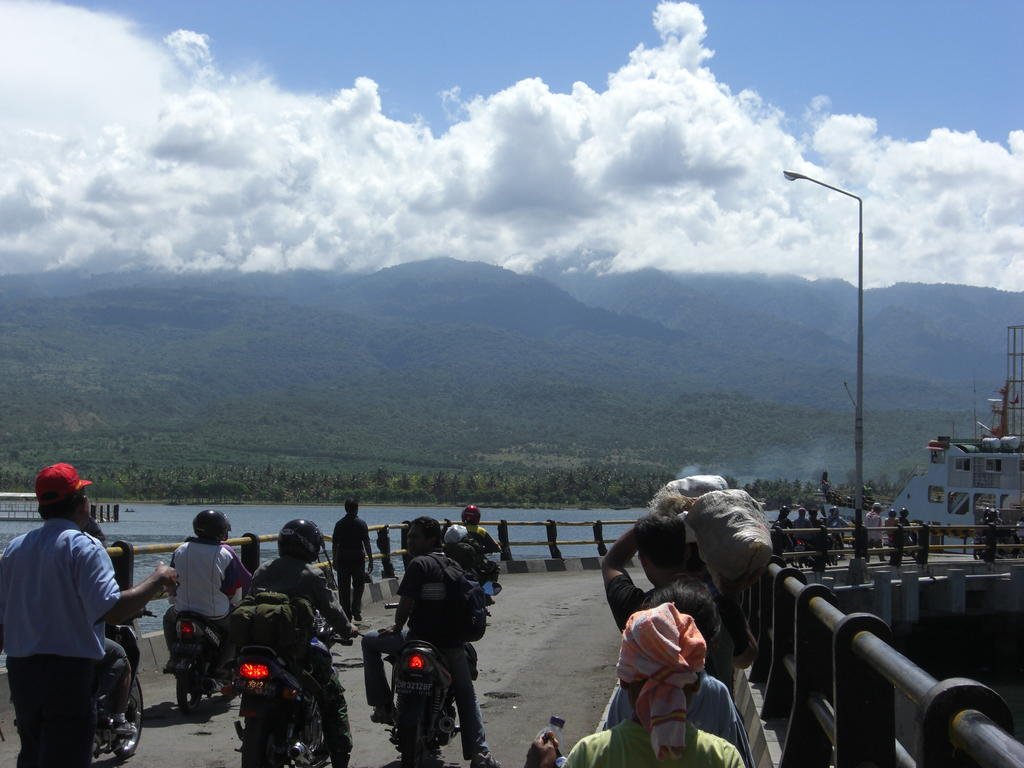
One major difference worth noting is the huge rise in pedestrian traffic compared to what you are used to. This is particularly evident when early morning and midday when schools open and close. Kids the world over have a habit of skylarking in groups and many a school kid has ended up dead after being shoved sideways by a mate or being chased onto the road. Be majorly careful at these times. It seems that practically no one walks on the right, facing the on-coming traffic. I have been told it is illegal. Whatever the case, on the narrow roads, pedestrians are an ever present danger.
Speaking of narrow, not unexpectedly, the shoulders of roads take a real pounding. Beware that being forced off the road could be really test your skills as broken shoulders and deep potholes are not uncommon especially outside of Bali. Also, be very wary on bright sunny days. Potholes seem to have an uncanny knack of secreting themselves in the shadows cast by the roadside trees. Be warned. And bridges: the approaches and exits often seem to be marked with a decided bump – be aware. Speed humps too. These sometimes seem to have been erected by concerned villagers, which is fine but they are seldom accompanied by any warning signs.
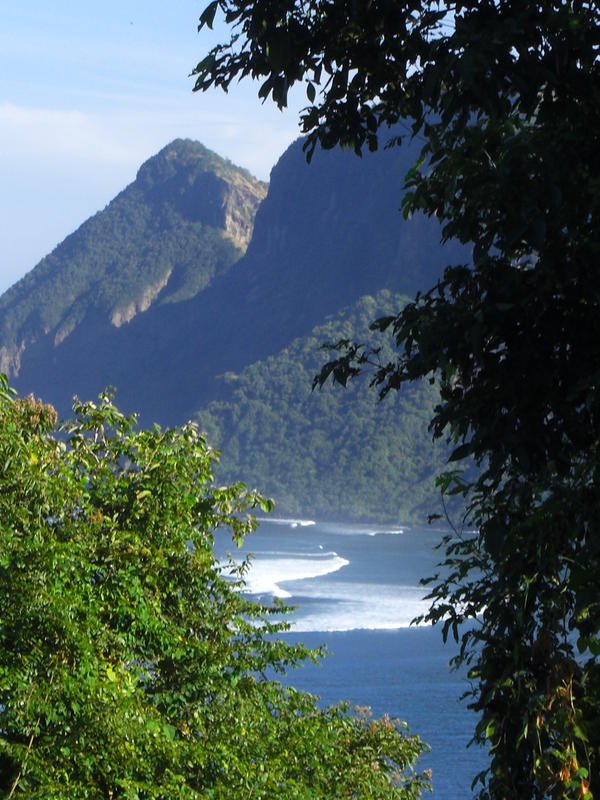
Be especially vigilant when passing through towns and villages. This is where you will encounter the most traffic, pedestrians and dogs. Roadsides adjacent to markets are particularly crowded, with stalls often encroaching onto the roadway. It’s here you will encounter pony carts or dokars and three wheeled becaks, bicycles with a two-wheeled carriage up front for the transport of people or goods. It’s a general free for all in these situations. Trucks blocking the road to unload goods, mini buses disgorging passengers, pony carts touting for business all combine to bring traffic to a crawl and everyone is eager to get beyond the bottleneck pronto, so it’s every man for himself.
Dogs are a hazard. Poorly fed, mangy, many on their last legs, every now and then you see them skittled. Collect one and you’ll surely find yourself biting the bitumen. Collect a buffalo and it could be ‘all over red rover.’ Fortunately, buffaloes are ponderous and, unlike little kids, rarely do anything unexpected such as dash from one side of the road to another. Nevertheless their sheer size warrants respect so when you see them – slow down to their pace.
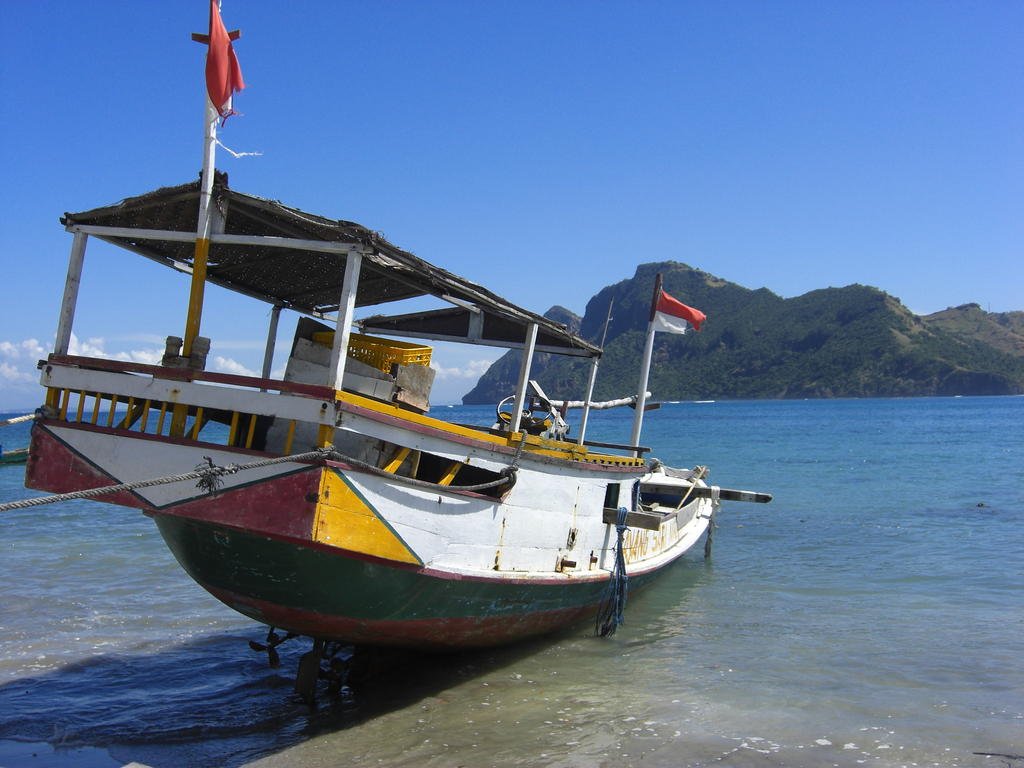
One thing you will have to get used to is the congestion in southern Bali and Java. Even on the best roads, such as the By-Pass Road to Sanur, vehicles travel much closer together. And, especially at major intersections, it seems every rider wants to be in the front row of the grid. It’s not unusual to see riders mount footpaths if they see a vacant spot further up front.
Sounds like a recipe for road rage but this is a term that gets lost in translation in Indonesia. In all the time I’ve ridden there I’ve never witnessed an ugly incident. Road users are a lot more tolerant of the stupidity of others. As to why – I’ll leave that one up to the cultural anthropologists! But for what it’s worth it may be a pleasant by-product of the general belief that it is demeaning, and a sign of immaturity, to indulge in gratuitous displays of anger in public. The end result though is that you, as a motorcyclist, if you happen to do something out of order, are unlikely to be on the receiving end of a mouthful, and even less likely to be the victim of a tyre lever over the skull!
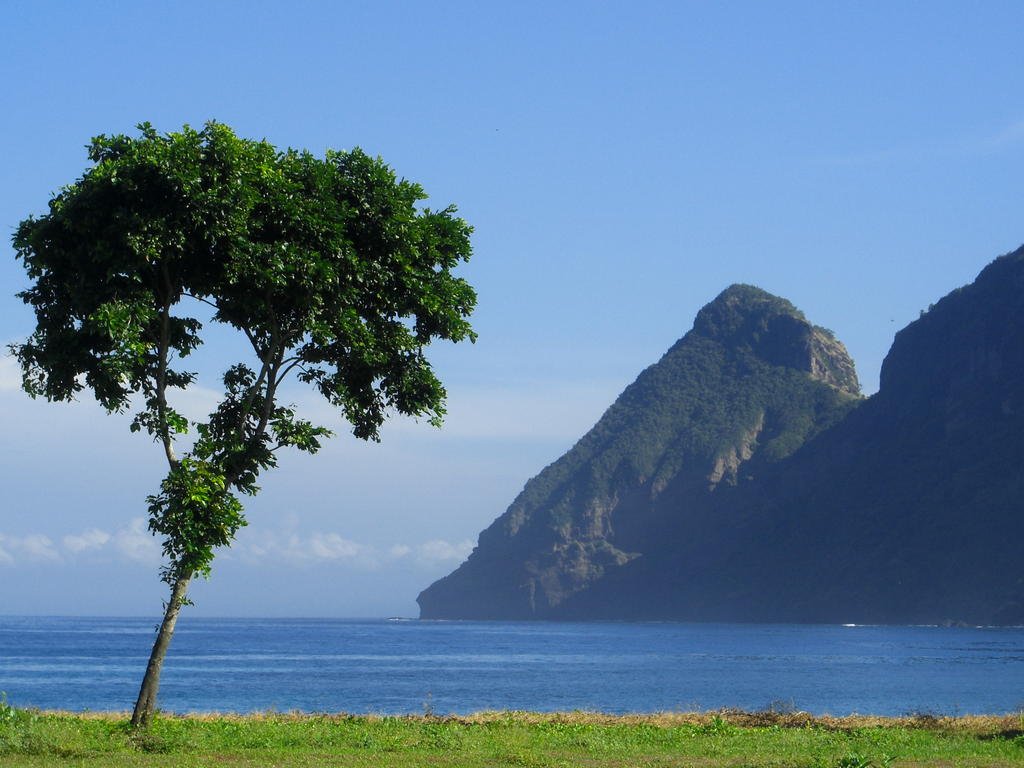
Generally though, for the experienced rider, riding in Bali, although different, is not too challenging. As long as you keep your wits about you, keep to the speed of the traffic around you and don’t take risks you will be fine. Traffic moves a lot more slowly and, although congested, 85% of the vehicles are scooters and small motorcycles. In Bali the roads are pretty good and are quite well signposted. However, as vegetation grows so quickly you often find signs partially or even totally obscured which can present problems. In islands east of Bali traffic is a lot less dense but the roads are not as good. Lombok’s main roads are OK but minor roads can be very bad. The same goes for Sumbawa and Flores excepting that the major highways west to east across these islands have a number of poorly maintained sections that can reduce travelling times considerably. Averaging 40km/hr over a 300 km trip would not be unusual.
One thing to be on the lookout for in Bali is the police. I rarely see motorcycle police or police in cars. Officers are usually stationed in police boxes at intersections or just stand at the edge of the road. The best way to avoid these guys is to pull up in the right-hand lane at the lights and, if possible, not make any eye contact with them at all.
The one thing they all do is check for your licence and International Driving Permit (IDP) as they know from experience that many tourists don’t have them. They call the licence a “SIM” (Surat Izin Mengemudi). Police are keen to book motorists for the slightest infringements such as stopping on or over the white line at the lights. Don’t even think about riding around without a helmet even if you’re just going 100m down the street. If police see you, you will be booked - guaranteed.
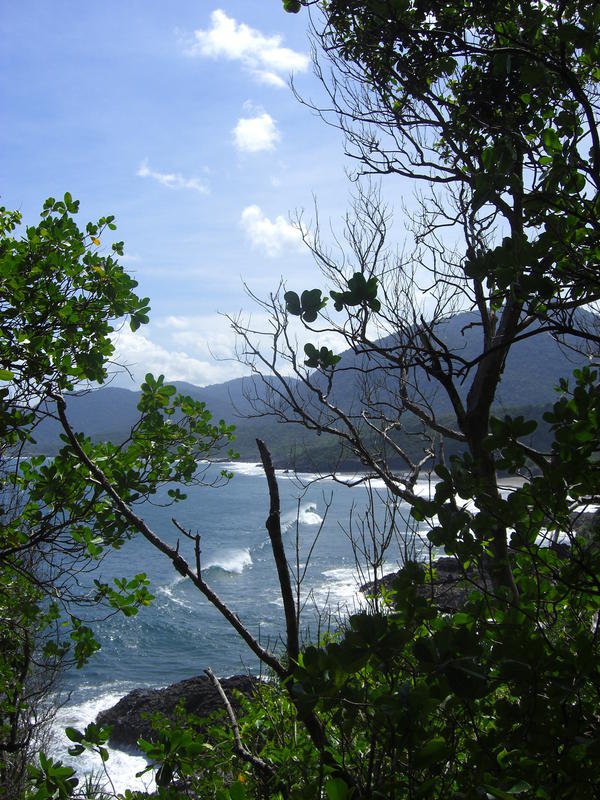
Now, here’s the interesting bit. How much of the filthy lucre do you hand over? I have heard of newly arrived tourists being brow beaten into parting with the equivalent of hundreds of dollars for very minor infringements. If you are pulled up by the police, stay calm. Never travel with a lot of cash in your wallet. If you can, don’t even have a wallet with you when you’re riding. Keep cash and credit cards safely tucked away in your money belt which should ride out of sight below your belt line. If the cop says, ‘You must pay a fine.’ don’t ask how much. If you are smart you will have an IDR 20,000 (about AUD$2.25c) note in your pocket together with a few other small notes. Take out this money and simply hand over the IDR 20,000 as if you’ve been through the whole palaver before and you’ll be on your way. If the cop demands more then give him the few small notes that remain. Oh, and don’t bother asking for a receipt. Standard procedure for the locals in Bali is to pay IDR 20,000 for a minor infringement IDR 50,000 for running a red light.
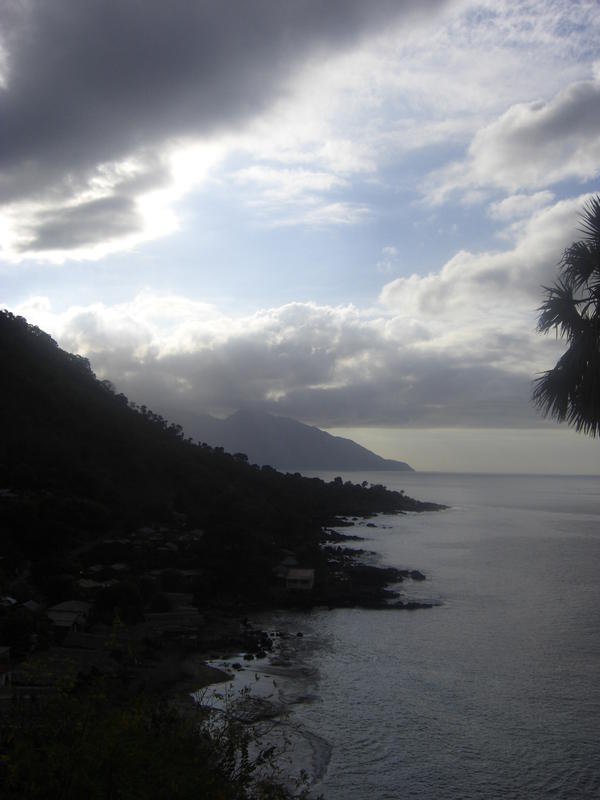
The worst thing you can do is start arguing. You are escalating a minor matter into something major. If there are two cops involved remember this: the cop who’s doing all the talking will be the one who has the best English. In this situation he has more status than his mate and he will not want to lose face in front of him. By arguing you are increasing your chances of getting into some ugly, stand-off which is just a waste of time. Pay the money, smile and move off to the next adventure. As anywhere if you obey the road rules you will not fall foul of the law, you are far less likely to fall off your bike and you are far more likely to have an amazing enjoyable time riding the many and varied roads and islands that can be found in Indonesia. Selamat Jalan – have a safe trip.
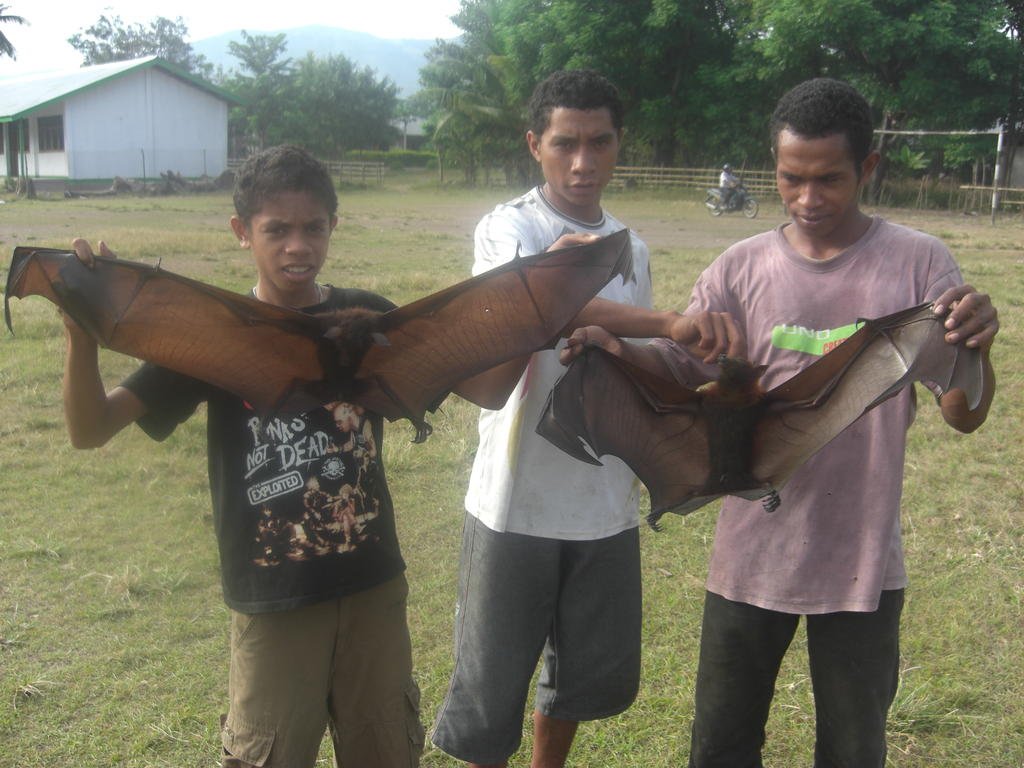
![DSCN2882[1].jpg DSCN2882[1].jpg](https://www.rideasia.net/motorcycle-forum/data/attachments/15/15980-ec68082aebf69152a2e2dfb2e27dca76.jpg) This is why I don't ride at night in unfamiliar areas. And I don't mean running over the drying peanuts!
This is why I don't ride at night in unfamiliar areas. And I don't mean running over the drying peanuts!So, you’re in Indonesia on a riding holiday and you want to make it back in one piece - how do you go about it? Same as anywhere else of course – ride, defensively, expect the unexpected and ‘live in the now’. When you’re on the bike, cruising along, it’s not the time to be thinking about the stunning waitress who served dinner at the hotel last night. You can do that when you’re stopped at the traffic lights!

But there are a few idiosyncratic elements attached to driving/riding in Indonesia that you have to come to terms with. In general, road users in the city are more disciplined than those in the countryside. For example, out in the sticks, using indicators is optional, as is the necessity to wait for a break in the traffic before doing a U-turn. When entering a major road from a driveway or a minor road, you just drive out and expect the traffic to slow or go around you. Rear vision mirrors are strictly for wusses; bikes look much more stylish without them. Furthermore, in rural areas lights are not really necessary. A pillion passenger holding a torch, or flashing one occasionally if batteries are low, will suffice. Bikes carrying whole families and all sorts of loads are a common sight and you will see a lot of young school kids lairising and racing each other to and from school. A lot of bikes won’t be registered or maintained and a lot of riders won’t be licensed.

In the city, at busy intersections on multi lane roads, where traffic lights are on a long cycle, if the light has only been red for a few seconds the attitude for some seems to be: “Just plough on through – after all the intersection is wide and the other guys will stop rather than have an accident!” If you’re a pretty girl on a scooter it’s best to avoid eye contact with male road users as you never know what sleazeoids are out there. The best way to do this is to text on your mobile as you’re riding, looking up occasionally to make sure you haven’t missed your exit.
And if you’re driving something bigger than everyone else, then they have to get out of your way – might is right ok?
Oh, and when you see a gap and pull out to overtake that truck or bus that’s been showering you with diesel smoke for the last 5 km, get back in quickly because guaranteed there’ll be a couple of young bucks behind you also hell bent on overtaking and getting back in to avoid the oncoming traffic. But, don’t expect them to do the same for you as they haven’t got eyes in the backs of their heads. Remember: they ditched the rear views in pursuit of that more stylish look ages ago!

One major difference worth noting is the huge rise in pedestrian traffic compared to what you are used to. This is particularly evident when early morning and midday when schools open and close. Kids the world over have a habit of skylarking in groups and many a school kid has ended up dead after being shoved sideways by a mate or being chased onto the road. Be majorly careful at these times. It seems that practically no one walks on the right, facing the on-coming traffic. I have been told it is illegal. Whatever the case, on the narrow roads, pedestrians are an ever present danger.
Speaking of narrow, not unexpectedly, the shoulders of roads take a real pounding. Beware that being forced off the road could be really test your skills as broken shoulders and deep potholes are not uncommon especially outside of Bali. Also, be very wary on bright sunny days. Potholes seem to have an uncanny knack of secreting themselves in the shadows cast by the roadside trees. Be warned. And bridges: the approaches and exits often seem to be marked with a decided bump – be aware. Speed humps too. These sometimes seem to have been erected by concerned villagers, which is fine but they are seldom accompanied by any warning signs.

Be especially vigilant when passing through towns and villages. This is where you will encounter the most traffic, pedestrians and dogs. Roadsides adjacent to markets are particularly crowded, with stalls often encroaching onto the roadway. It’s here you will encounter pony carts or dokars and three wheeled becaks, bicycles with a two-wheeled carriage up front for the transport of people or goods. It’s a general free for all in these situations. Trucks blocking the road to unload goods, mini buses disgorging passengers, pony carts touting for business all combine to bring traffic to a crawl and everyone is eager to get beyond the bottleneck pronto, so it’s every man for himself.
Dogs are a hazard. Poorly fed, mangy, many on their last legs, every now and then you see them skittled. Collect one and you’ll surely find yourself biting the bitumen. Collect a buffalo and it could be ‘all over red rover.’ Fortunately, buffaloes are ponderous and, unlike little kids, rarely do anything unexpected such as dash from one side of the road to another. Nevertheless their sheer size warrants respect so when you see them – slow down to their pace.

One thing you will have to get used to is the congestion in southern Bali and Java. Even on the best roads, such as the By-Pass Road to Sanur, vehicles travel much closer together. And, especially at major intersections, it seems every rider wants to be in the front row of the grid. It’s not unusual to see riders mount footpaths if they see a vacant spot further up front.
Sounds like a recipe for road rage but this is a term that gets lost in translation in Indonesia. In all the time I’ve ridden there I’ve never witnessed an ugly incident. Road users are a lot more tolerant of the stupidity of others. As to why – I’ll leave that one up to the cultural anthropologists! But for what it’s worth it may be a pleasant by-product of the general belief that it is demeaning, and a sign of immaturity, to indulge in gratuitous displays of anger in public. The end result though is that you, as a motorcyclist, if you happen to do something out of order, are unlikely to be on the receiving end of a mouthful, and even less likely to be the victim of a tyre lever over the skull!

Generally though, for the experienced rider, riding in Bali, although different, is not too challenging. As long as you keep your wits about you, keep to the speed of the traffic around you and don’t take risks you will be fine. Traffic moves a lot more slowly and, although congested, 85% of the vehicles are scooters and small motorcycles. In Bali the roads are pretty good and are quite well signposted. However, as vegetation grows so quickly you often find signs partially or even totally obscured which can present problems. In islands east of Bali traffic is a lot less dense but the roads are not as good. Lombok’s main roads are OK but minor roads can be very bad. The same goes for Sumbawa and Flores excepting that the major highways west to east across these islands have a number of poorly maintained sections that can reduce travelling times considerably. Averaging 40km/hr over a 300 km trip would not be unusual.
One thing to be on the lookout for in Bali is the police. I rarely see motorcycle police or police in cars. Officers are usually stationed in police boxes at intersections or just stand at the edge of the road. The best way to avoid these guys is to pull up in the right-hand lane at the lights and, if possible, not make any eye contact with them at all.
The one thing they all do is check for your licence and International Driving Permit (IDP) as they know from experience that many tourists don’t have them. They call the licence a “SIM” (Surat Izin Mengemudi). Police are keen to book motorists for the slightest infringements such as stopping on or over the white line at the lights. Don’t even think about riding around without a helmet even if you’re just going 100m down the street. If police see you, you will be booked - guaranteed.

Now, here’s the interesting bit. How much of the filthy lucre do you hand over? I have heard of newly arrived tourists being brow beaten into parting with the equivalent of hundreds of dollars for very minor infringements. If you are pulled up by the police, stay calm. Never travel with a lot of cash in your wallet. If you can, don’t even have a wallet with you when you’re riding. Keep cash and credit cards safely tucked away in your money belt which should ride out of sight below your belt line. If the cop says, ‘You must pay a fine.’ don’t ask how much. If you are smart you will have an IDR 20,000 (about AUD$2.25c) note in your pocket together with a few other small notes. Take out this money and simply hand over the IDR 20,000 as if you’ve been through the whole palaver before and you’ll be on your way. If the cop demands more then give him the few small notes that remain. Oh, and don’t bother asking for a receipt. Standard procedure for the locals in Bali is to pay IDR 20,000 for a minor infringement IDR 50,000 for running a red light.

The worst thing you can do is start arguing. You are escalating a minor matter into something major. If there are two cops involved remember this: the cop who’s doing all the talking will be the one who has the best English. In this situation he has more status than his mate and he will not want to lose face in front of him. By arguing you are increasing your chances of getting into some ugly, stand-off which is just a waste of time. Pay the money, smile and move off to the next adventure. As anywhere if you obey the road rules you will not fall foul of the law, you are far less likely to fall off your bike and you are far more likely to have an amazing enjoyable time riding the many and varied roads and islands that can be found in Indonesia. Selamat Jalan – have a safe trip.




